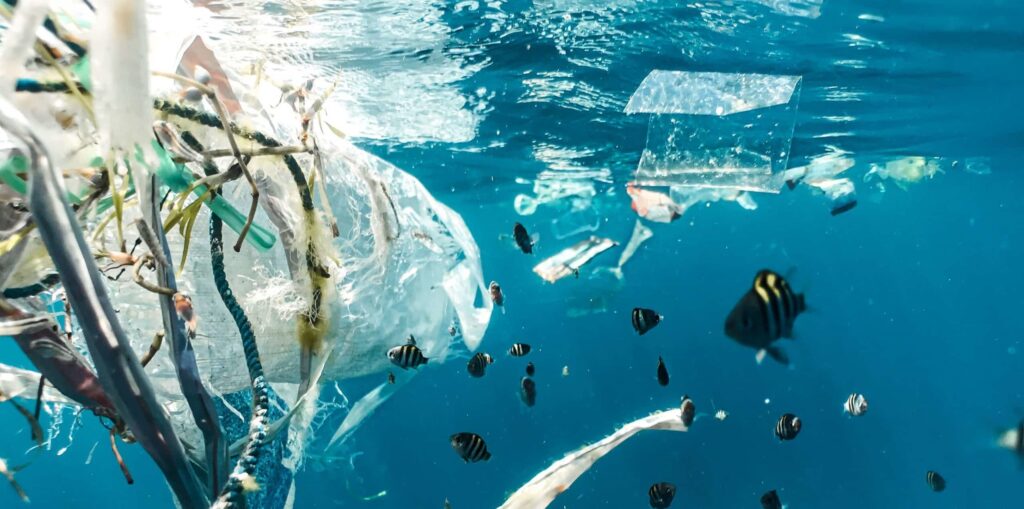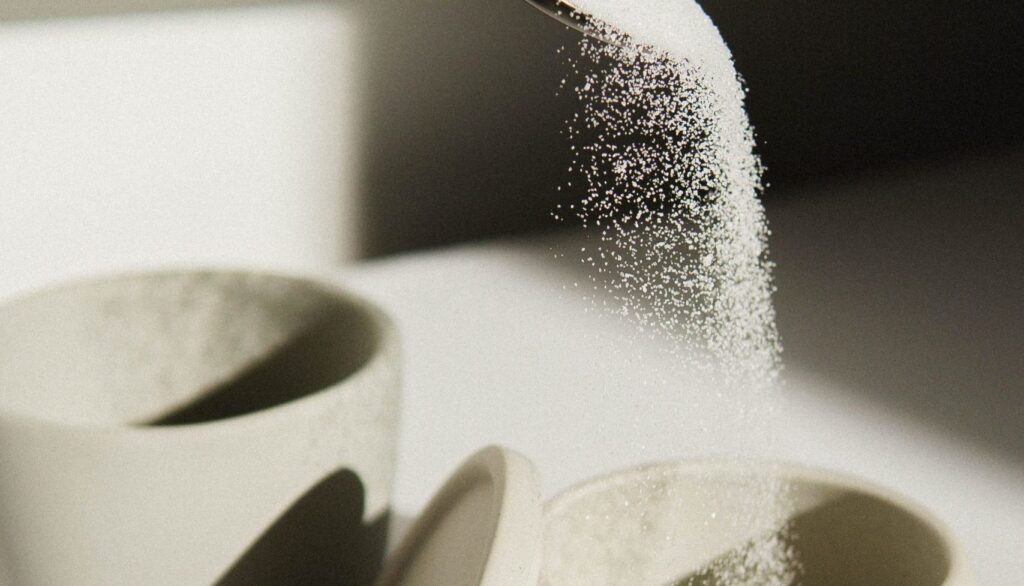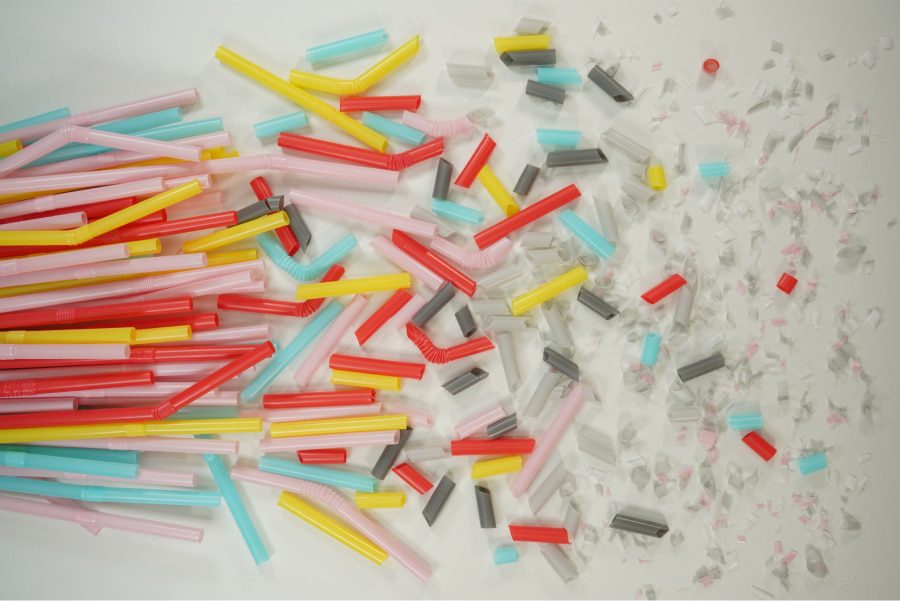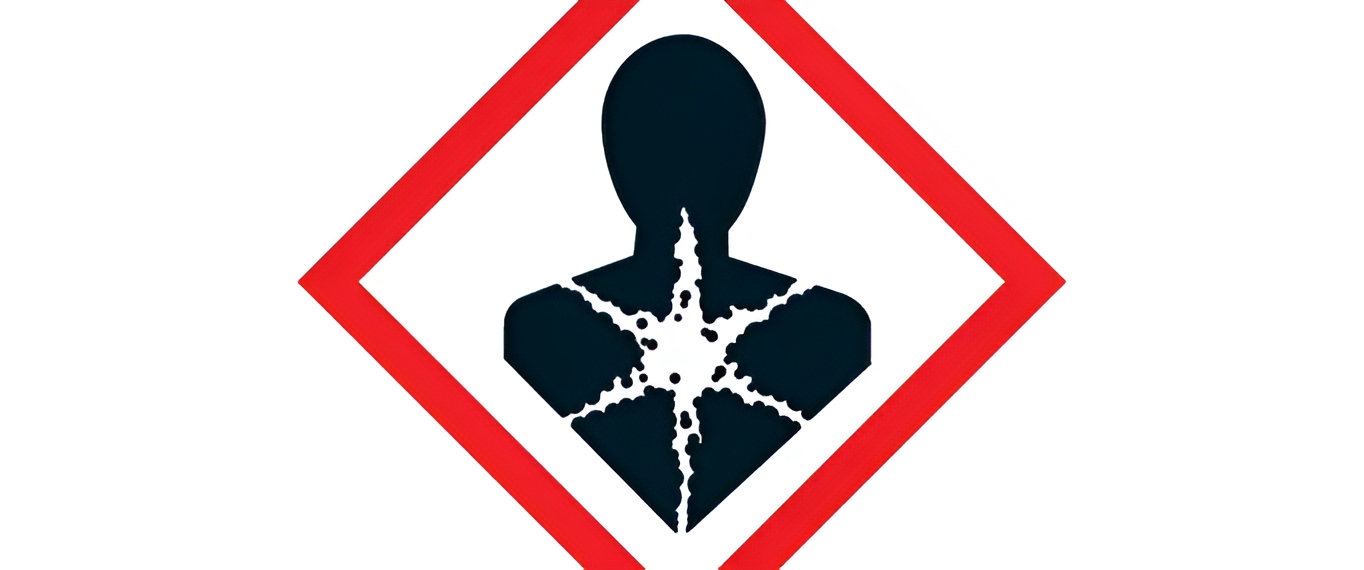What are microplastics in cosmetics?
Plastic pollution has been a topic of global concern for many years. When we think of plastic in our oceans, we often picture bottles and bags floating on the surface. However, microplastics, which are much smaller and often invisible to the naked eye, are equally concerning.
Microplastics are so small that they can bypass purification systems and end up directly in our oceans, where they can remain for hundreds of years. This has a significant impact on our environment and health, especially when we consider that marine life, including fish, can ingest microplastics, which can then make their way up the food chain and onto our plates.
Although there is currently no universal definition for microplastics, authorities in the EU and other regions are working to establish guidelines. Generally speaking, microplastics are solid particles that are not water-soluble and are not biodegradable. They can range in size from 5 millimeters to as small as 1µm.
In this article, we will explore the issue of microplastics in cosmetic products, including their potential effects on the environment and human health, and discuss possible solutions to this problem.
Where do the microplastics come from?

Microplastics that pollute our environment often come from various sources, not just cosmetics. One source is the slow disintegration of larger plastic pieces that have not been disposed of properly. These pieces slowly break down due to atmospheric phenomena and erosion, creating billions of microspheres that are not visible to the naked eye but can still harm marine ecosystems. For instance, a single tire can turn into millions of microspheres.
In addition to larger plastic pieces, microplastics can also come from the fibres of synthetic clothes and other synthetic materials we use daily. Generally, microplastics can be divided into two categories: primary and secondary. Primary microplastics are small particles, smaller than 5mm, released into the environment from synthetic garment washing, tire abrasion while driving or added to consumer products like creams, toothpaste, scrubs, shampoos, shaving foam, and detergents for their abrasive action. These primary microplastics account for 15-31% of the total plastic present in the ocean.
On the other hand, secondary microplastics originate from the degradation of larger plastic objects such as plastic bags or bottles. They account for approximately 68% of the microplastics present in the ocean. It is essential to note that microplastics are ubiquitous, and reducing their presence in the environment will require collective action to address all potential sources.
Why are microplastics used in cosmetics?
Microplastics are commonly used in rinse-off cosmetics for their exfoliating or cleansing action, such as in scrubs, as well as in many makeup products. Polyethylene and polypropylene are the most commonly used plastics in cosmetics and can be found in products for both men and women, including soaps, creams, gels, and toothpaste.
Unfortunately, some of these products have been marketed as environmentally friendly or natural, despite the inclusion of microplastics. Although cosmetics are not the primary source of microplastics in marine waters, the sheer volume of these products used daily by millions of people contributes significantly to the pollution and destruction of ecosystems in oceans, lakes, and seas. It is essential to recognize the role that cosmetics play in microplastic pollution and take action to reduce their use and the impact they have on our environment. Have a read of our article on natural and organic cosmetics certification.
WHAT IS THE CURRENT STATUS OF MICROPLASTIC LEGISLATION IN THE EU?

The debate on plastics in oceans and seas has led to significant progress in recent years. In 2015, Cosmetics Europe, the European association of the cosmetics industry, urged its members to permanently suspend the use of microplastics in all cosmetics by 2020.
Italy has taken a leading role in this area, with a microplastics in cosmetics ban, particularly on microplastics in rinse-off cosmetics with an exfoliating or cleansing action taking effect on January 1st, 2020. Other EU countries have also introduced restrictive measures on the use of microplastics, mainly focused on rinse-off cosmetics containing solid plastic particles smaller than 5mm.
However, cosmetic products such as makeup and natural particles that do not persist in the environment, release chemicals or biologically active ingredients or affect animal food chains are not subject to these restrictions.
As part of a broader strategy to reduce plastics in the EU, the European Commission has tasked ECHA (and its RAC and SEAC committees) with preparing a restriction dossier under REACH relating to microplastic particles intentionally added to products of any type. A timeline of the management of these issues is provided below, along with a forecast of future steps.
WHAT IS BEING DONE TO BAN MICROPLASTICS IN COSMETICS?
There is a new draft regulation presented that will amend Annex XVII of Regulation REACH 1907/2006. This regulation will set restrictions on the manufacturing, placing on the market, and use of certain dangerous substances, preparations, and articles. The draft regulation will take effect on the 20th day following its publication in the Official Journal of the EU.
| Intention to prepare restriction dossier | 17 January 2018 |
| Call for evidence | 1 March – 1 May 2018 |
| Stakeholder workshop | 30 – 31 May 2018 |
| Submission of restriction dossier | 11 January 2019 |
| Public consultation of the Annex XV dossier | 20 March 2019 – 20 September 2019 |
| RAC opinion | June 2020 |
| Draft SEAC opinion | June 2020 |
| Consultation on draft SEAC opinion | 1 July – 1 September 2020 |
| Combined final opinion submitted to the Commission | February 2021 |
| Draft amendment to the Annex XVII (draft restriction) by Commission | 30 August 2022 |
| Discussions with Member State authorities and vote | 2022-2023 |
| Scrutiny by Council and European Parliament | Before adoption (3 months) |
| Restriction adopted (if agreed) | TBC |
Under this new regulation, products containing microplastics cannot be placed on the market as substances on their own, or in mixtures in a concentration equal to or greater than 0.01% by weight. This is essentially a ban on the use of synthetic polymer microparticles in products intended to confer a particular characteristic.
1. The new draft regulation introduces a harmonized definition of synthetic polymer microparticles
The new draft regulation provides specific criteria for defining synthetic polymer microparticles. These criteria state that such particles are solid polymers that are contained in particles and make up at least 1% of the particle’s weight or build a continuous surface coating on particles. Furthermore, at least 1% by weight of those particles must fulfil either of the following conditions:
- (a) All dimensions of the particles are equal to or less than 5mm, starting from 0.1µm where the concentration of synthetic polymer microparticles covered by this entry cannot be determined by existing analytical methods or accompanying documentation.
- (b) The length of the particles is equal to or less than 15mm, and their length-to-diameter ratio is greater than 3, starting from 0.3µm where the concentration of synthetic polymer microparticles covered by this entry cannot be determined by existing analytical methods or accompanying documentation.
There are also specific criteria that exclude polymers from this definition, including:
- Polymers resulting from natural polymerization processes that are not chemically modified
- Degradable polymers that are proven to degrade according to a defined study methodology(c) polymers that have a solubility greater than 2 g/L as proven in accordance with other Appendix;
- Polymers with a solubility greater than 2 g/L as proven in accordance with another appendix
- Polymers that do not contain carbon atoms in their chemical structure.
2. The draft regulation proposes a transitional period for different types of products before they are subject to the new restrictions. The transitional periods are as follows:
- Six years for synthetic polymer microparticles used in the encapsulation of fragrances
- Four years for rinse-off products (as defined in point (1)(a) of the Preamble to Annexes II to VI to Regulation (EC) No 1223/2009), unless they contain synthetic polymer microparticles used as an abrasive (microbeads)
- Twelve years for lip products, nail products, and makeup covered by Regulation (EC) No 1223/2009, unless they are covered by certain exemptions or contain microbeads
- Six years for leave-on products, as defined in point (1)(b) of the Preamble to Annexes II to VI to Regulation (EC) No 1223/2009), unless they are covered by certain exemptions
The restrictions will mainly affect the cosmetics industry through microbeads, glitters, and encapsulated fragrances. However, biodegradable and dissolved polymers, as well as natural polymers, are not within the scope of the proposed restriction.
The RAC opinion issued in 2020 includes derogations, including one that specifically applies to the cosmetic sector. This derogation exempts film-forming functions of microplastics in cosmetic products since the microplastic particles cease to exist at the point of use. However, it is difficult to determine a priori whether or not a polymer is a microplastic eligible for this derogation, and raw material suppliers are responsible for providing this information to cosmetic brands.
which ingredients can be considered microplastics according to this draft?

Microplastics in cosmetics list:
The INCI dictionary provides a non-exhaustive list of microplastic ingredients in cosmetics, or that may be present in cosmetic products. The list includes possible ingredients that can be derogated.
| Polymer | Function |
| Nylon-12 (polyamide-12) | Bulking, viscosity controlling, opacifying (e.g. wrinkle creams) |
| Nylon-6 | Bulking agent, viscosity controlling |
| Poly(butylene terephthalate | Film formation, viscosity controlling |
| Poly(ethylene isoterephthalate | Bulking agent |
| Poly(ethylene terephthalate) | Adhesive, film formation, hair fixative; viscosity controlling, aesthetic agent, (e.g. glitters in bubble bath, makeup) |
| Poly(methyl methylacrylate) | Sorbent for delivery of active ingredients |
| Poly(pentaerythrityl terephthalate) | Film formation |
| Poly(propylene terephthalate) | Emulsion stabilizing, skin conditioning |
| Polyethylene | Abrasive, film forming, viscosity controlling, binder for powders |
| Polypropylene | Bulking agent, viscosity increasing agent |
| Polystyrene | Film formation |
| Polytetrafluoroethylene (Teflon) | Bulking agent, slip modifier, binding agent, skin conditioner |
| Polyurethane | Film formation (e.g. facial masks, sunscreen, mascara) |
| Polyacrylate | Viscosity controlling |
| Acrylates copolymer | Binder, hair fixative, film formation, suspending agent |
| Allyl stearate/vinyl acetate copolymers | Film formation, hair fixative |
| Ethylene/methylacrylate copolymer | Film formation |
| Ethylene/acrylate copolymer | Film formation in waterproof sunscreen, gellant (e.g. lipstick, stick products, hand creams) |
| Butylene/ethylene/styrene copolymer | Viscosity controlling |
| Styrene acrylates copolymer | Aesthetic, coloured microspheres (e.g. makeup) |
| Trimethylsiloxysilicate (silicone resin) | Film formation (e.g. colour cosmetics, skincare, sun care) |
However, it’s important to note that the supplier of the ingredient is responsible for providing all necessary information about whether it is considered a microplastic or not. It is therefore recommended that the industry starts asking for information about the nature of the ingredient from the beginning, especially if it falls under the definition of future regulation.
Update 2023: Regulation (EU) no. 2023/2055 on Synthetic Polymer Microparticles Published

On September 27, 2023, Regulation (EU) No. 2023/2055 was introduced, bringing modifications to Annex XVII of the REACH regulation. This annex outlines restrictions on the manufacturing, market placement, and usage of specific hazardous substances, mixtures, and articles.
Notably, a new entry, labeled “78,” has been incorporated into the list of restricted substances. This addition pertains to “Synthetic polymer microparticles,” which are solid polymers that must adhere to specific conditions.
Furthermore, two new appendices, numbered 15 and 16, have been introduced. Appendix 15 provides guidelines for demonstrating the degradability of polymers, while Appendix 16 addresses the solubility of polymers.
Deadlines to keep in mind depending on the item:
- Glitters and microbeads will be banned from the 17th of October 2023
- Synthetic polymer particles below five millimetres that are organic, insoluble and resist degradation will be banned:
- From rinse-off products in 4 years
- From makeup, lip products and nail products in 12 years
The aim is to reduce intentional emissions of microplastics from as many products as possible. Some examples of common products within the scope of the restriction are:
- Granular infill used on artificial sports surfaces – the largest source of intentional microplastics in the environment;
- Cosmetics, where microplastic is used for multiple purposes, such as exfoliation (microspheres) or obtaining a specific texture, fragrance or color;
- Detergents, fabric softeners, glitter, fertilizers, plant protection products, toys, medicines and medical devices, to name a few.
Starting from October 17, 2023, the initial set of restrictions, specifically concerning the ban on micrograins and loose glitter, will take effect with the implementation of the regulation. For other cases, the ban will be rolled out at varying times, depending on the product. This staggered approach allows operators time to explore and adopt alternative solutions before compliance becomes mandatory.
Update 17 October 2025:
𝐓𝐨𝐝𝐚𝐲 𝟏𝟕 𝐨𝐟 𝐎𝐜𝐭𝐨𝐛𝐞𝐫, one 𝐃𝐞𝐚𝐝𝐥𝐢𝐧𝐞 of the 𝐑𝐞𝐠𝐮𝐥𝐚𝐭𝐢𝐨𝐧 𝟐𝟎𝟐𝟑/𝟐𝟎𝟓𝟓 has been 𝐫𝐞𝐚𝐜𝐡𝐞𝐝. From today onwards, the 𝐜𝐨𝐬𝐦𝐞𝐭𝐢𝐜 𝐩𝐫𝐨𝐝𝐮𝐜𝐭𝐬 𝐭𝐡𝐚𝐭 𝐜𝐨𝐧𝐭𝐚𝐢𝐧 𝐒𝐏𝐌 (synthetic polymer microparticles) according to the definitions provided above are required to include 𝐈𝐧𝐬𝐭𝐫𝐮𝐜𝐭𝐢𝐨𝐧 𝐟𝐨𝐫 𝐮𝐬𝐞 𝐚𝐧𝐝 𝐝𝐢𝐬𝐩𝐨𝐬𝐚𝐥 on the label of the product.
The instructions for use and disposal should indicate how the product must be used and disposed of, including any residual product (still containing SPM) in the container/packaging or on work areas, tools and equipment, in order to prevent SPM emissions to the environment. These instructions can be in the form of pictograms if the space of the label is reduced. Further clarifications are provided in the Explanatory Guide on the REACH restriction of synthetic polymer microparticles.
At Taobé, we strongly recommend initiating the practice of requesting declarations from your raw material suppliers. These declarations should confirm that the materials they provide are not subject to the definition of microplastics as outlined in the Regulation. Especially if you want to go the natural and clean cosmetics route. To explore this topic, please go read the article on Natural, Organic, Clean and Vegan Cosmetics: Master the difference!
If you have any specific questions about microplastics, please contact us. We’re here to assist you in managing this significant challenge in the cosmetic industry while staying compliant with the regulations.



